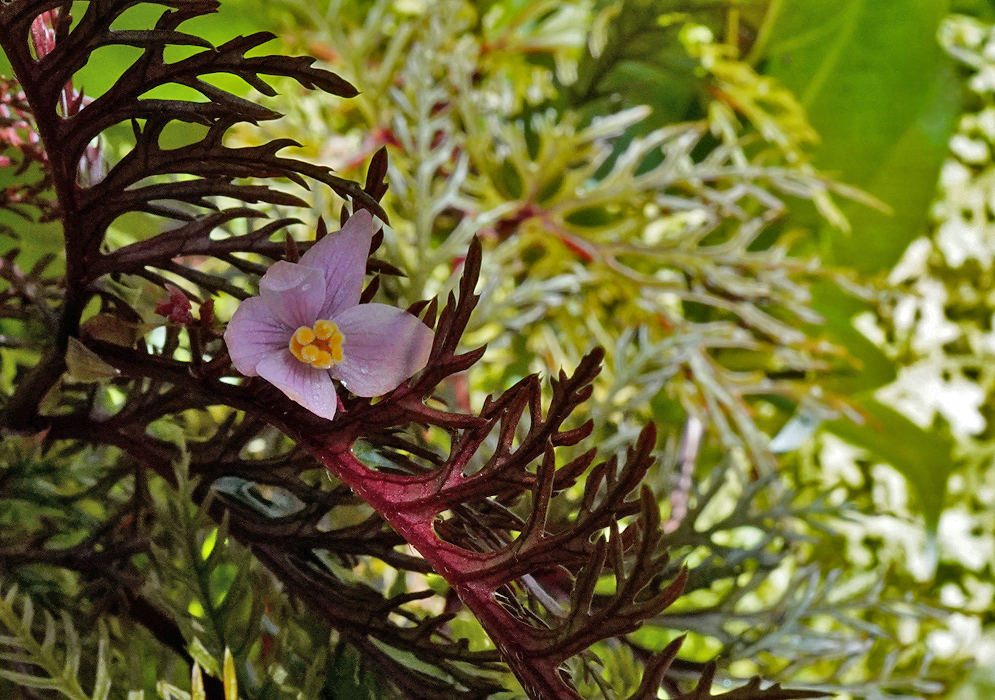This post has 11 Simple Fields-fields attached. Show fields.

Endemic to the lowland rainforests of Seram Island in Indonesia, this small perennial herb is adapted to warm, humid conditions and thrives in shaded understories where it grows in humus-rich, consistently moist soils. It is recognized for its highly ornamental foliage, consisting of dark red to maroon bipinnate leaves that resemble fine ferns, and for its delicate pale pink flowers that appear intermittently throughout the year in tropical climates. Each bloom typically has two large outer petals and two smaller inner petals, with prominent yellow stamens in the center. In its natural habitat, it grows on the forest floor, often among moss and leaf litter, benefiting from filtered light and stable humidity levels above 80 percent. Begonia bipinnatifida is cultivated primarily by collectors and botanical gardens due to its striking leaf structure and relatively uncommon availability in the horticultural trade. It is propagated from stem cuttings or leaf cuttings under high humidity. Photographed in Florida.

